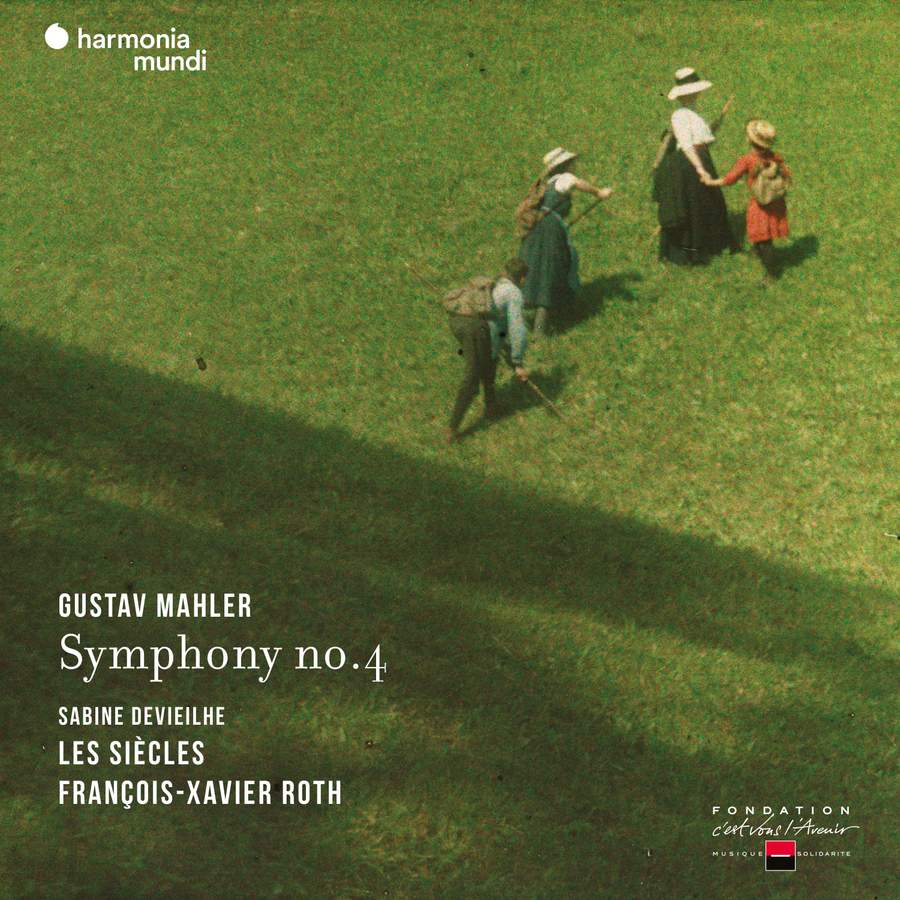MAHLER Symphony No 4 (Roth)
View record and artist detailsRecord and Artist Details
Genre:
Orchestral
Label: Harmonia Mundi
Magazine Review Date: 09/2022
Media Format: CD or Download
Media Runtime: 55
Mastering:
DDD
Catalogue Number: HMM90 5357

Tracks:
| Composition | Artist Credit |
|---|---|
| Symphony No. 4 |
Gustav Mahler, Composer
François-Xavier Roth, Conductor Les Siècles Sabine Devieilhe, Soprano |
Author: Edward Seckerson
I absolutely adored this performance. No equivocation. Hearing the music as Mahler might have heard it – and indeed imagined it – both in the very particular sound of period instruments and the extraordinary impact that has on phrasing and expression makes it sound more radical in ways that the supersonic amplitude of today’s orchestras tends to obscure. Put simply, we have grown so accustomed to lushness, to spectacle, to over-projection in Mahler’s music (and especially in this piece) that phrasing is too often sacrificed to opulence as a means of expression. Let’s be clear, vibrato is no substitute for a sensitively shaped phrase, rubato is no more effective because it is more broadly applied, and portamento isn’t something cosmetic to be ladled on like a special effect but rather a means of expression that is integral to the phrasing.
It is true that exaggeration is a key part of Mahler’s armoury. In taking all the trappings of the Austro-German symphonic tradition and pushing them to the nth degree he was in essence melding past with future in dramatically progressive ways. But the Fourth was perhaps his most concerted attempt at writing a classical symphony through the prism, if you like, of his own romantic nature, and though it is full of ‘special effects’, of ‘off the spectrum’ innovation and surprise, it still projects a Viennese elegance, poise and, yes, innocence.
What registers immediately in Roth’s reading – and the deliciously honest playing of his band Les Siècles – is an open-faced, playful nature. By virtue of its deft phrasing and articulation there is an immediate focus and transparency in the sound. The pacing of the first movement is fleet-footed and imperative without ever sounding pressed, corners are deftly turned (rubato indications acknowledged but not over-worked) and the clarity of the counterpoint throughout (all those quirky inner woodwinds) keeps the textures open and vibrant.
I love the ‘second childhood’ capriciousness of this first movement, with extreme dynamics and raucous sonorities sprung like naughty pranks. The darkening drama of the central climax is not diminished by Roth’s sense of scale and proportion – if anything the big moments feel bigger, the exaggerations more pronounced in this context.
The mistuned solo violin (a whole tone higher) of the second-movement Ländler is a great example of Mahler violating the wholesomeness of the music he is writing. It lends an ironic, acidic edge to the proceedings – Death, the folkloric fiddler. But then the Trio could hardly be rosier or more Viennese, and in Roth’s performance how effective is the juxtaposition of sentimental portamento (swathes of it but so naturally applied) and pungent woodwinds at the top of their voices.
And so the glorious slow movement doesn’t so much evolve as float at the outset. Becalmed. Peaceful. Mahler spoke of his mother’s smile in this music but the quartet ‘Mir ist so wunderbar’ from Beethoven’s Fidelio was surely the musical recollection that gave it voice. Again a fluid tempo is tailored to the reduced sustaining power of the instruments, and sweep and breadth are achieved in the shapely and emotive phrasing. The variational digression within the movement has a genuinely fantastical improvisatory feel and one genuinely feels Mahler relishing the gamesmanship of this music. In this context the big ‘heaven’s gate’ climax feels huge rather than merely bombastic and the coda is more seraphic for being so pure – or perhaps I should say ‘honest’ – in its projection. The beauty is definitely not skin deep.
So much has been said and written about the choice of a song – ‘Das himmlische Leben’ (‘Heavenly Life’) – as the finale of this symphony. This was Mahlerian innovation and daring writ large. The human voice, from a textural point of view, takes us well and truly into another realm. It is enigmatic, it is subliminal. It removes us from base reality in the most unexpected way. But I agree with Roth that taking the ‘little gospel’ of the text as the summation of what has gone before is a mistake. Just as over-characterising the text is a mistake. I have never been able to get my head around the Bernstein aberration of using a Vienna Choir boy for his later recording of the piece. Great Mahlerian that he was, he should have known better than to take the song’s childlike connotations so literally. Sabine Devieilhe sings it quite gorgeously with a bell-like clarity and directness, and the final stanza is truly balm, pure and unaffected, like so much that makes this performance special.
Maybe it’s the piece, of all Mahler’s symphonies, that especially lends itself, but it has opened my ears and my heart and there isn’t a whole lot more that one can ask for, is there?
Discover the world's largest classical music catalogue with Presto Music.

Gramophone Digital Club
- Digital Edition
- Digital Archive
- Reviews Database
- Full website access
From £8.75 / month
Subscribe
Gramophone Full Club
- Print Edition
- Digital Edition
- Digital Archive
- Reviews Database
- Full website access
From £11.00 / month
Subscribe
If you are a library, university or other organisation that would be interested in an institutional subscription to Gramophone please click here for further information.




